Some plants have an immediate, shout-out-loud appeal, others beguile us more slowly. For many years I thought dianthus, those low-growing, carnation-like flowers that sit over cushions of grey foliage, to be old-fashioned and too much fuss for too few flowers. I had seen far too many of them during my childhood in the gardens of older relatives to want them in my garden.
It took a collector of dianthus to open my eyes to their beauty and to challenge my prejudices. Plant collectors are often eccentric, sometimes geeky but always passionate ambassadors for their plants and it was one, the late Mark Trenear, who showed me the beauty and the history of dianthus, or pinks and, importantly, how they could find a place in the garden.
The genus Dianthus includes carnations and sweet williams as well as pinks. Sweet williams are biennial plants with domed heads of small flowers. Seed mixes usually produce plants with a range of pink and magenta flowers. The distinction between carnations and pinks is sometimes blurred. Carnations are descended from Dianthus caryophyllus, a species from southern Europe and North Africa, and tend to produce large flowers on tall stems.
What are dianthus?
A genus of about 300 species of mainly herbaceous perennials –and hundred of cultivars and hybrids – that have been grown in European gardens since the 16th century. Also known as pinks or gilly flowers, dianthus origins are Europe and Asia and they flower in late spring and early summer. Their size is from about 10cm to 80cm tall and most need very well-drained soil in an open sunny situation. Dianthus are hardy in most areas of the UK and northern Europe. Those grown in pots may need some winter protection. Most have an RHS hardiness rating of H6 (hardy to temperatures of -20 to -15ºC), and are suitable for gardens in
USDA zones 3a to 9b.
Where does the name 'pink' come from?
The word ‘pink’ has been used in Britain to describe Dianthus since the 15th century. The exact origin of the word itself is unclear, but it is thought to refer to the pinking around the edges of the flower’s petals. A less attractive possibility is that it descends from a Dutch word that describes a disease that left the eyes bloody – a reference to the red centre of many pinks. The first recorded uses of the word to describe a colour between red and white don’t appear until the early years of the 17th century. It is an indication of how widespread the plant was that its name became accepted as a description of anything that shared its colouring.
How to grow dianthus
Where to plant dianthus
Dianthus need a well-drained soil and an open, sunny situation. Both are essential: even partial shade from overhanging shrubs or other perennials will reduce flowering and in a wet soil the plants will rot. Heavy clay soils should be improved by adding lots of horticultural grit. Don’t be tempted to use an organic mulch to feed dianthus, as its moisture content can cause the plant to rot.
How to deadhead dianthus
By the end of summer, dianthus plants can become straggly and messy, although this can be avoided by deadheading hard as the flowers fade throughout the summer. It is also a good idea to cut them back by about a third at the end of the season. I do mine in early September.
Dianthus are not long-lived and after a few years plants become woody and sprawling. When that happens, dig them up and plant new ones. Some modern hybrids that are marketed as long-flowering or even perpetual flowering tend to need replacing more often, usually after just two years. Dianthus work well in pots, using a John Innes No.2 loam-based compost, mixed half-and-half with horticultural grit.
When to take dianthus cuttings
Dianthus are among the easiest plants to propagate. Cuttings, taken between June and September will root quickly and make strong plants the following year. To take cuttings, known as pipings, firmly hold a non-flowering shoot in one hand just below a leaf node and pull the rest of the stem sharply with the other hand. Remove the lower leaves and you have a cutting.
I learned from Mark Trenear that soaking the pipings in water overnight produces successful cuttings. Pot them into a cuttings compost, inserting them around the edge of the pot. I find that loam-based composts are more reliable than coir or peat-based ones. Keep in a shady place outdoors, in a cold frame or a cool greenhouse that is shaded from direct sunlight.
After three or four weeks the pipings should be rooted and can be repotted on in 9cm pots of potting compost and grown on until the following spring.
The best dianthus to grow
Dianthus ‘Gran’s Favourite’
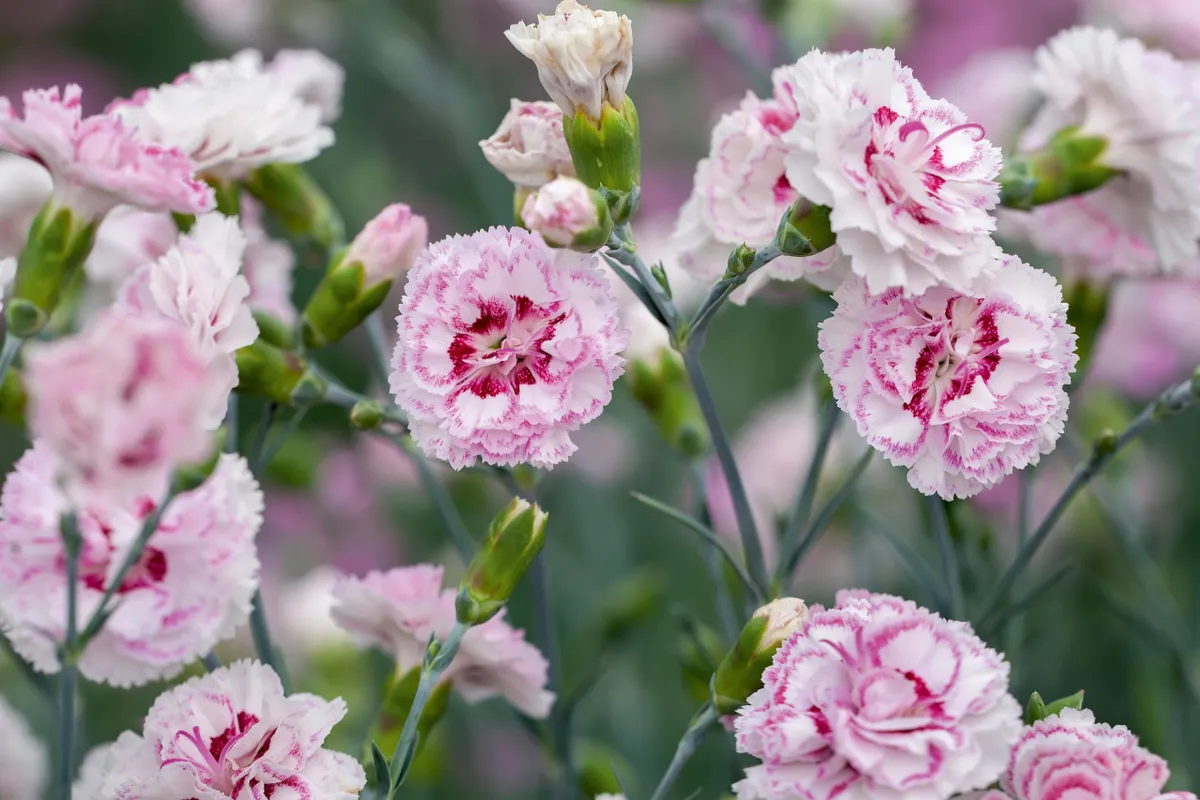
A dianthus cultivar that has become a favourite of many gardeners since its introduction in the mid 1960s. It is long flowering, compact, and has a strong clove scent that is typical of many dianthus. 30cm. AGM. RHS H6.
Dianthus plumarius
One of the parent plants of many hybrids. Native to Austria and Croatia, this dianthus has become naturalised in Britain on well-drained chalk soils. Although the stems are relatively short, it can spread to 50cm. 20cm. RHS H7, USDA 3a-9b.
Dianthus ‘Greensides’
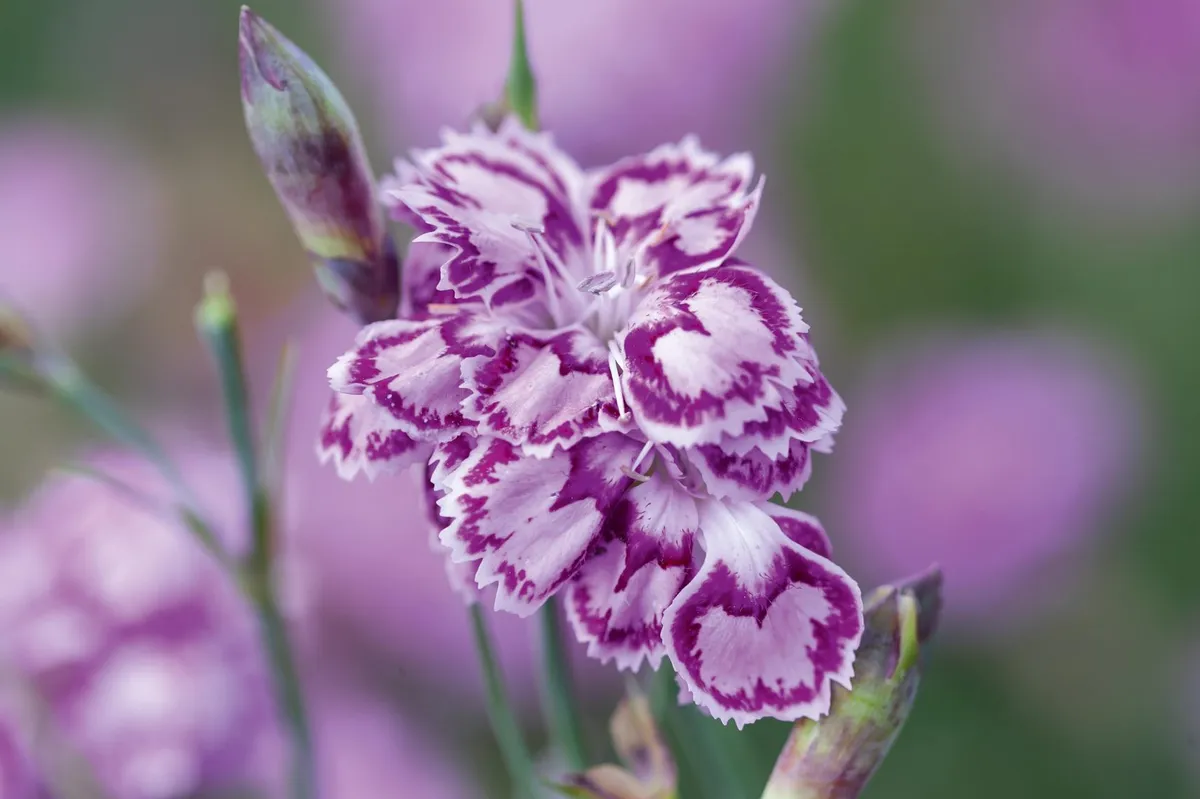
Dating from the early 19th century, this hybrid dianthus forms a dense, compact dome. Like most pinks that date from this period it has a very strong clove-like perfume. 25cm.
Dianthus ‘Fair Folly’
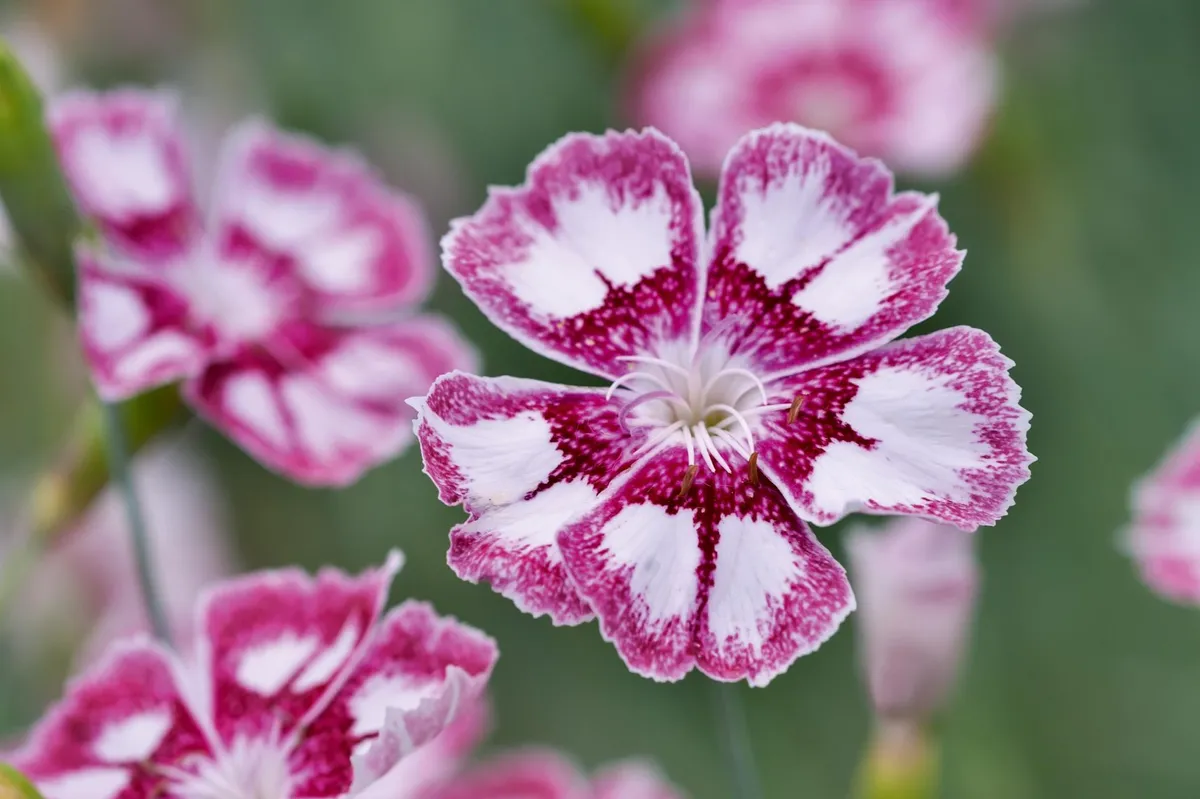
The simple, single flowers with the faded raspberry staining over a white background create a more unfussy effect than other dianthus. This has reputedly been grown since about 1700 and has a mild, spicy scent. Sometimes sold as Dianthus ‘Constance Finnis’. 25cm.
Dianthus ‘Queen of Sheba’
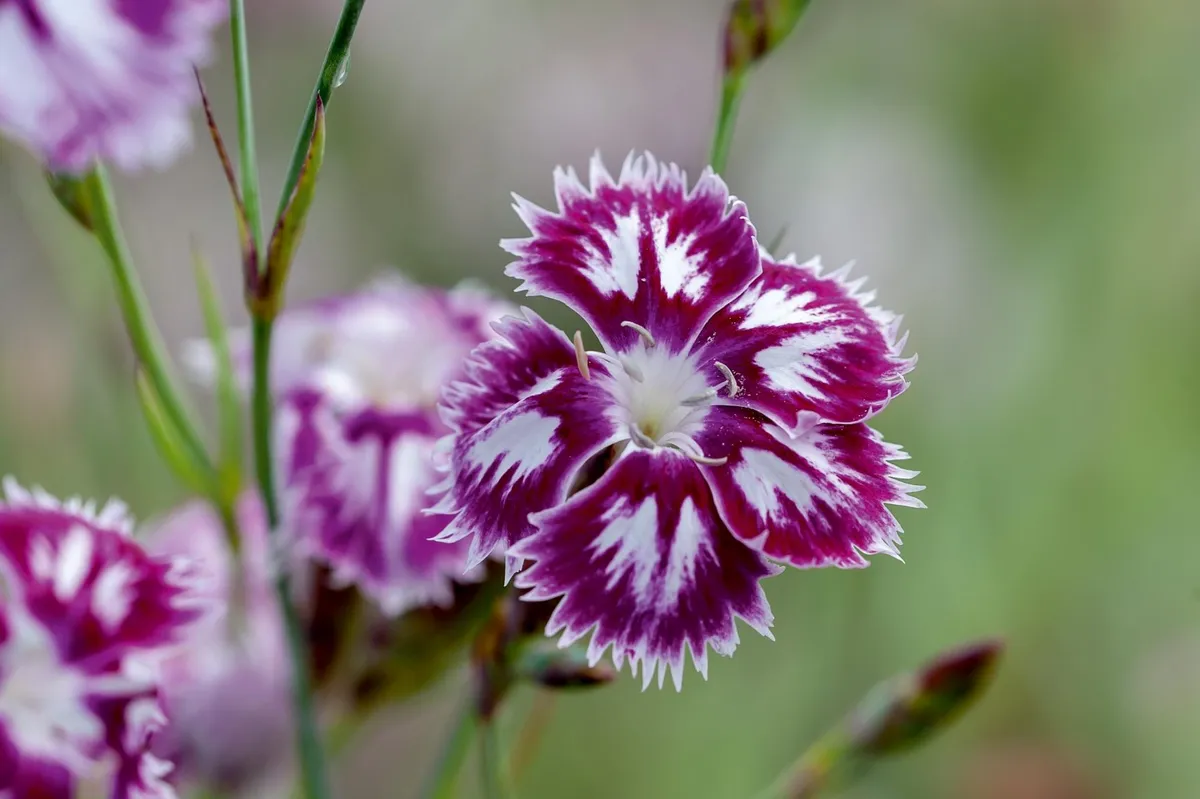
The intricate magenta pattern on the fringed petals retreats to the edge of the petal as the flower ages. A dianthus that is floriferous and long flowering, its flowers smell of honey. Its name has appeared in books and catalogues since the early 1600s. 30cm.
Dianthus ‘Solomon’
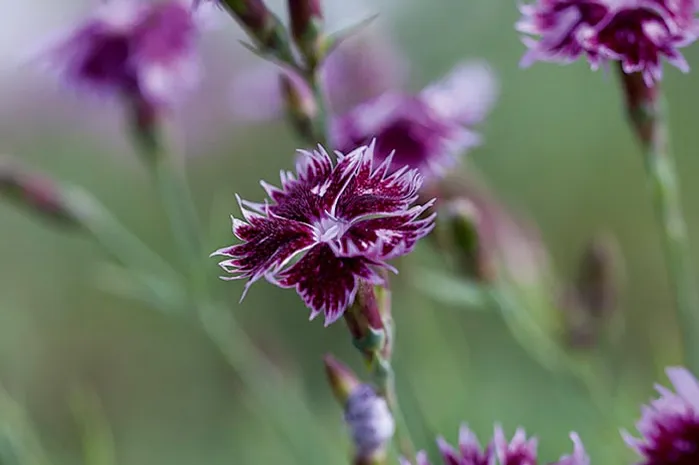
An old cultivar and one of the darkest-flowered pinks with deep-burgundy flowers that have a finely cut, mauve fringe. It is neither a strong grower nor long-lived, and will need replacing every couple of years, but will flower for five to six weeks. 35cm.
Dianthus ‘Farnham Rose’
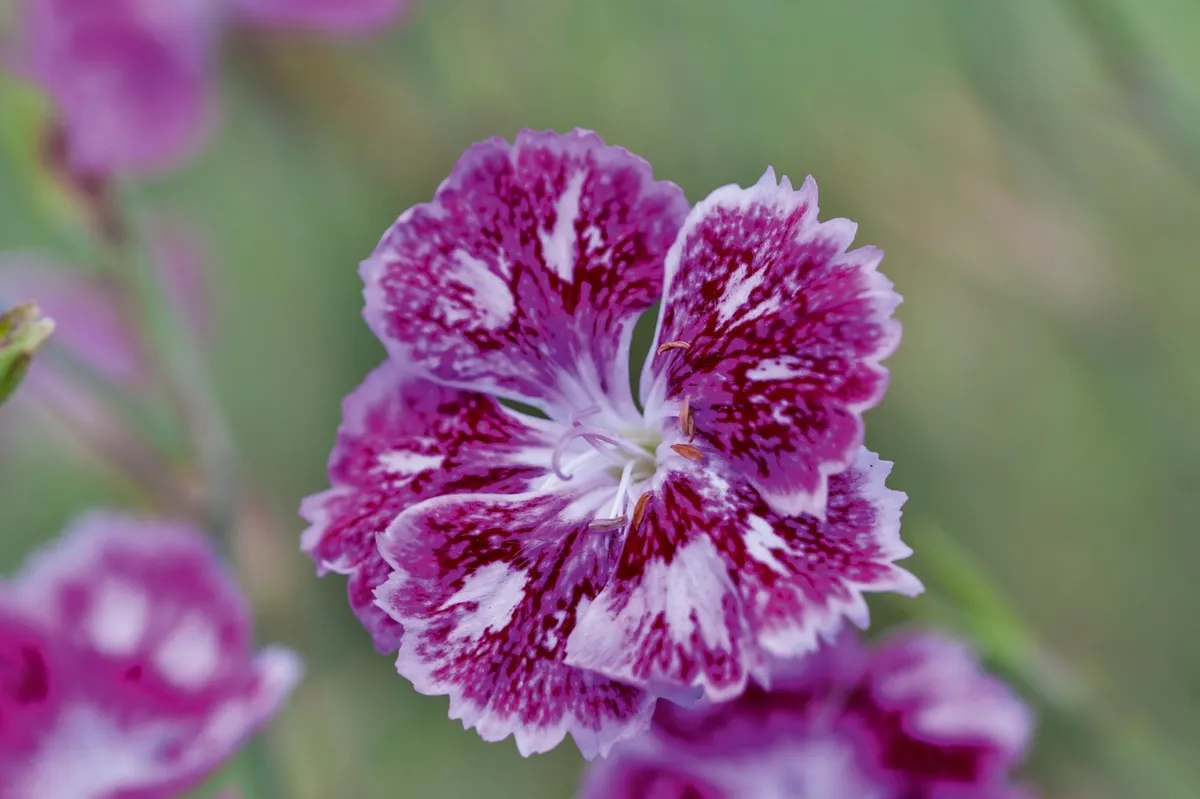
A dianthus cultivar that is reputed by many growers to be more vigorous and more floriferous than other hybrids. These are not qualities that I have noticed, but I do like its large single flowers marked in a deep claret colour that does not fade as the flower ages. 30cm.
Dianthus ‘Murray Douglas’
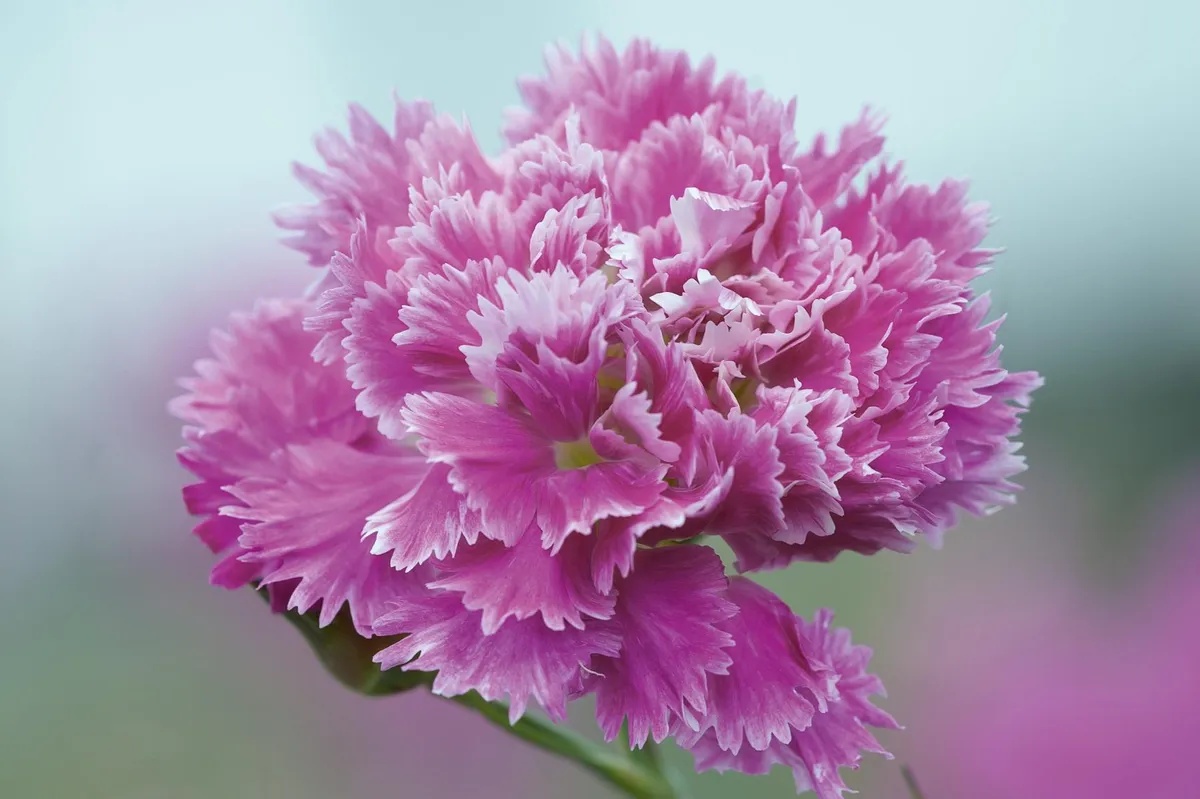
This is at the flamboyant end of the genus, with fully double flowers that have deep-pink petals with a candy floss frosting on the edges. The flowers have a very strong spicy perfume and are on stems that grow well clear of the mound of foliage. 40cm.
Dianthus ‘Mrs Macbride’
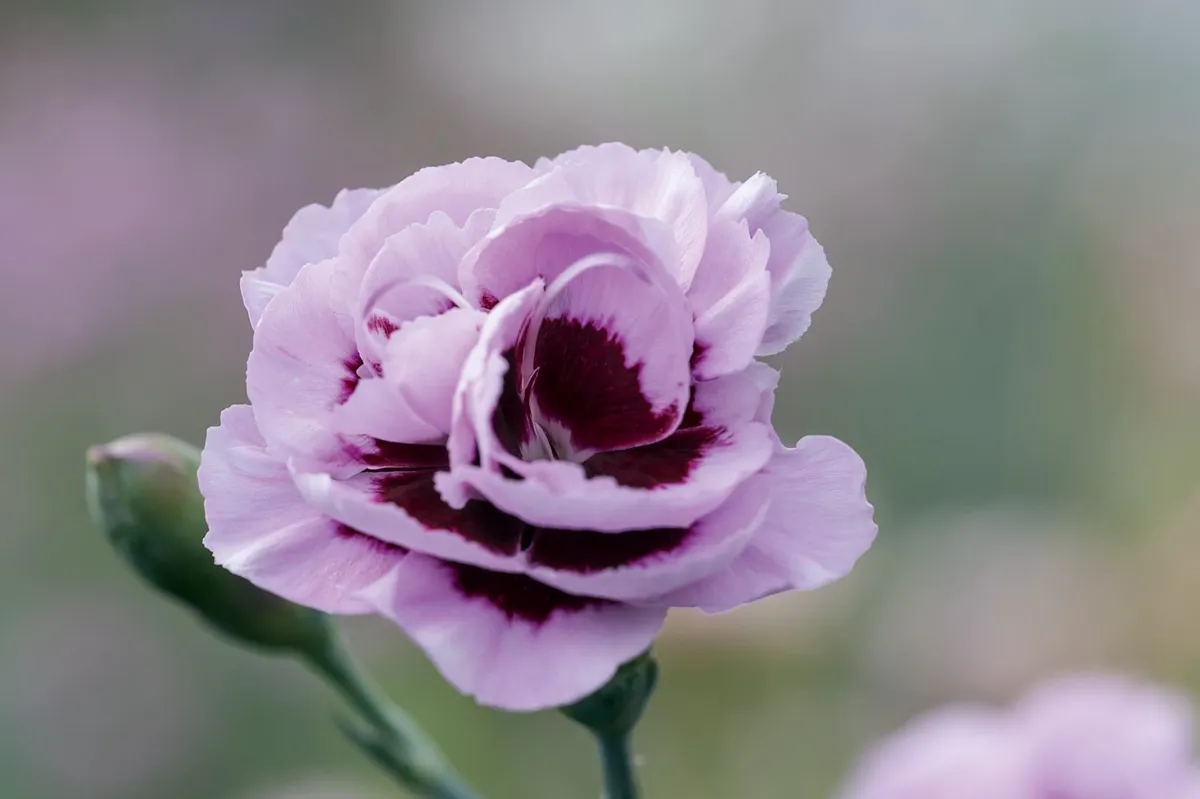
A dianthus cultivar with tightly packed petals on semi-double flowers, it retains an elegance that is often lost in double flowers, partly because the maroon centre harmonises well with the rose-pink petals. A floriferous plant with up to six flowers per stem. 35cm.
Dianthus ‘Painted Lady’
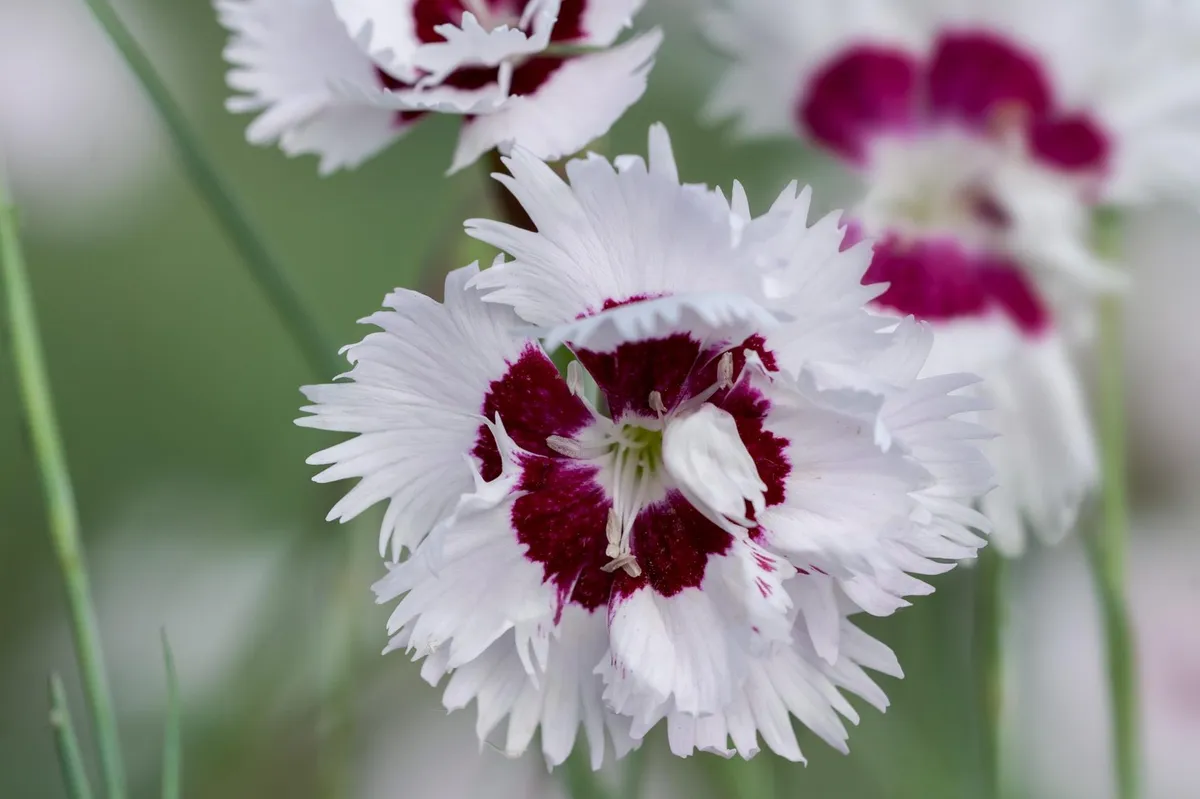
A pink bearing this name was grown in Britain in 1700 but it is impossible to know if this is the same plant. The ruby centre of the flower bleeds into the white petals as they age. The perfume is sweeter and less spicy than that of most dianthus flowers. 35cm.
Dianthus ‘Musgrave’s Pink’
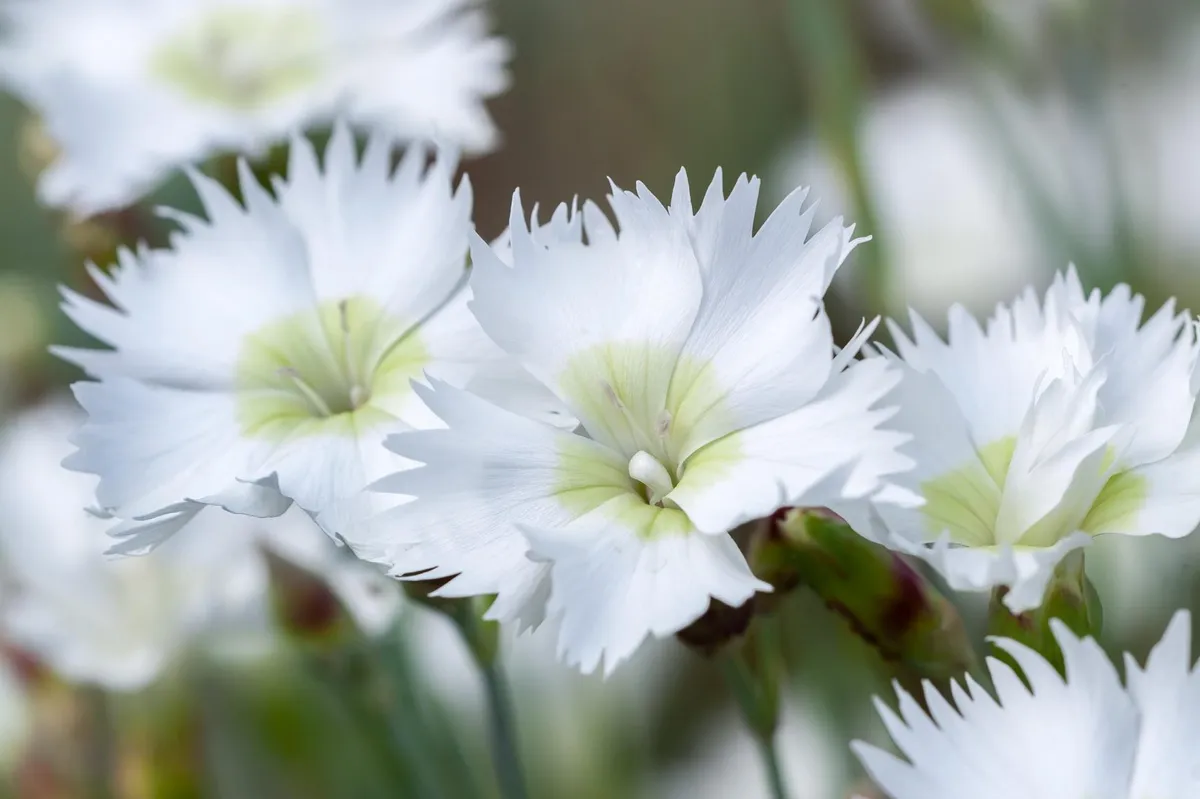
A source of confusion to gardeners new to the genus, ‘Musgrave’s Pink’ is a crisp white. The flowers are enhanced by a pastel green centre. A very popular dianthus cultivar that has reputedly been grown in Britain since the 1730s. 40cm.
Dianthus ‘Old Square Eyes’
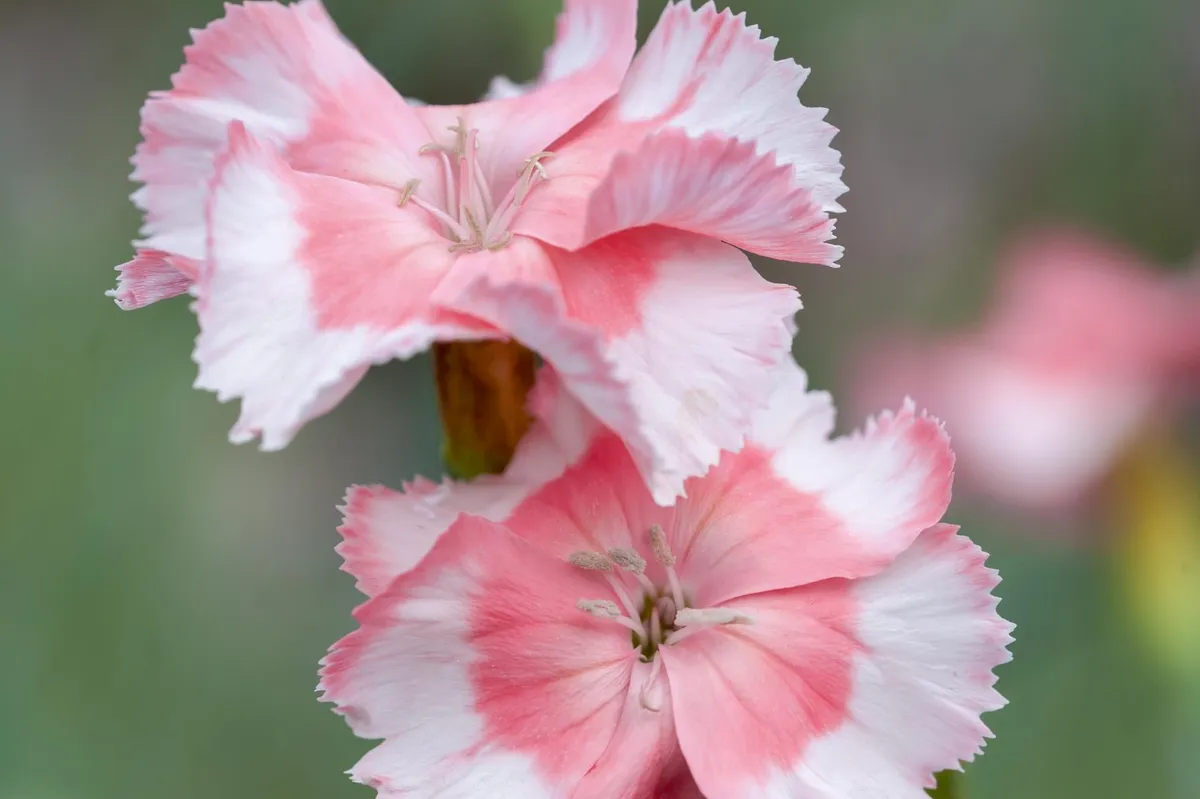
Despite the name, this is a modern dianthus hybrid with flat flowers that have frilly petals that are delicately edged in salmon pink, a colour not seen in many other dianthus. The perfume is sweeter, more honey-like and less spicy than most pinks. 40cm.
Dianthus ‘White Ladies’
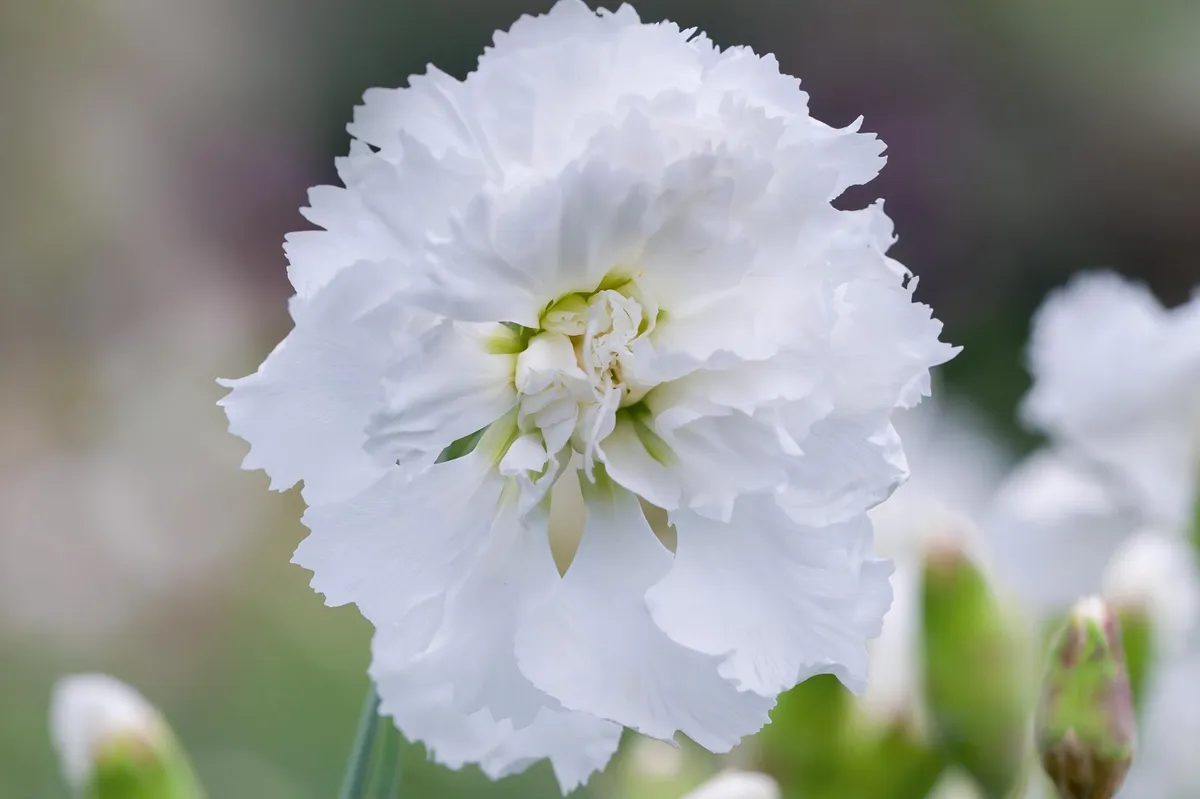
This double-flowered form is made up from a loose collection of petals, which gives the flower a slightly dishevelled look. The flowers are a gleaming white, which is enhanced by a pale-green centre. A compact dianthus plant that grows to about 25cm.
Where to buy dianthus
• Allwoods Summerfield Nursery, London Road, Hassocks, West Sussex BN6 9NA. Tel 01273 844229, allwoods.net
• Beth Chatto Gardens, Elmstead Market Colchester, Essex CO7 7DB. Tel 01206 822007, bethchatto.co.uk
• Hardy’s Cottage, Garden Plants, Priory Lane Nursery, Freefolk Priors, Whitchurch, Hampshire RG28 7FA. Tel 01256 896533, hardysplants.co.uk
• Whetmans Pinks, Houndspool, Ashcombe, Dawlish, Devon EX7 0QP. Tel 01626 863328, whetmanpinks.com
